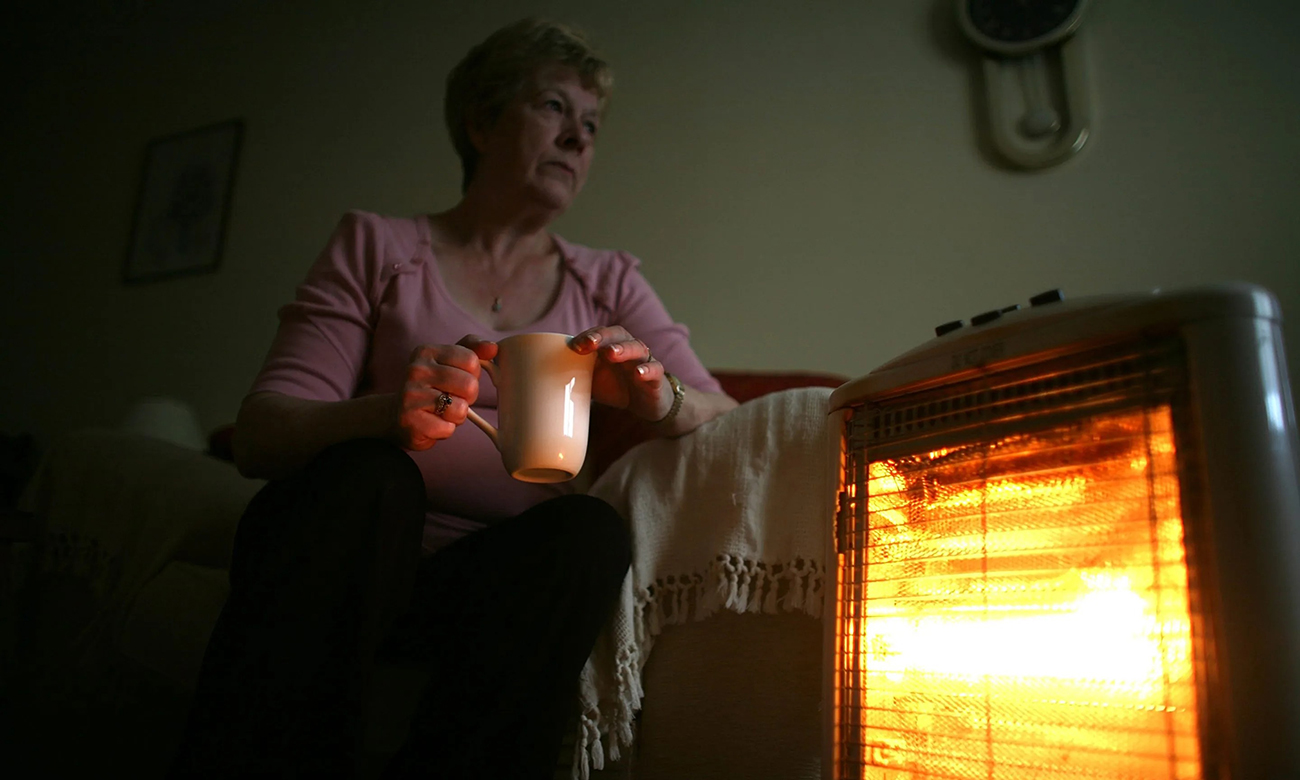
欧洲的最新通胀数据令人不安。
欧盟统计局(Eurostat)的统计数据显示,10月,欧元区消费物价涨幅从上个月的9.9%提高到10.7%,创下历史记录。这个数字令美国银行(Bank of America)的经济学家感到意外。他们曾预测欧元区通胀将小幅下降到9.8%。
尽管欧元区竭尽全力增加能源供应和降低通胀,但上个月能源价格较去年同期暴涨了41.9%。
自从今年2月俄乌冲突爆发以来,欧洲一直在努力解决能源危机。欧洲国家刚刚决定快速向清洁能源转型,并关闭了核电厂,不久便爆发了俄乌冲突,因此俄罗斯今年切断天然气供应之后,欧洲国家受到了通货膨胀的严重冲击。
在俄乌冲突爆发之前,欧盟27个成员国40%的天然气和30%的原油供应都依赖俄罗斯。
由于能源供应减少,欧洲许多地区的电价已经上涨了两倍。但最近,欧洲的天然气储备已经超过了年度目标的90%,略高于过去五年的平均水平。
欧洲天然气价格最近降至四个月最低,因此许多人认为能源危机可能即将结束。
但咨询公司欧亚集团(Eurasia Group)能源主管亨宁·格洛伊斯坦却认为,危机不太可能结束。
他上周对CNBC表示:“随着天气变冷,库存将很快耗尽。如果冬季寒流导致库存减少,2023年初的能源供应将变得非常紧张,这意味着可能出现价格大幅上涨和能源短缺。”
美国基建资本管理公司(Infrastructure Capital Management)CEO杰伊·哈特菲尔德解释称,能源市场尤其是天然气市场“几乎只会受到冬季天气的影响”。
他对《财富》杂志表示:“因此我认为,现在宣布欧洲的天然气危机已经解决为时尚早。”
高盛(Goldman Sachs)分析师预计,欧洲明年的情况将变得更糟糕。他们在10月初的一份研究报告中表示,欧洲大陆的总能源成本到2023年将增加2万亿美元。
如果他们的预测成真,这意味着欧洲普通家庭每个月的电费要高达500欧元,将比2021年160欧元的平均水平增加两倍以上。
哥伦比亚大学(Columbia University)全球能源政策中心(Center on Global Energy Policy)研究员塔蒂阿娜·米特罗娃之前曾对《财富》杂志表示:“几乎可以确定,明年的情况会更糟糕。”
虽然能源价格是欧洲通胀的主要驱动因素,但最新数据显示,消费物价上涨也变得更普遍。
例如,10月食品、酒精饮料和烟草价格暴涨13.1%,不包括波动性食品和能源价格的核心通胀上涨了5%,而9月的上涨幅度为4.8%。
尽管面临高通胀,上个季度欧元区经济仍持续增长。但国内生产总值(GDP)仅上涨了0.2%,相比之下第二季度的涨幅为0.8%。而且大多数专家认为,欧洲现在肯定要陷入经济衰退。
剑桥大学(University of Cambridge)皇后学院(Queens’ College)院长穆罕默德·埃里安曾在上个月表示,欧洲经济衰退是“板上钉钉”,而标普全球(S&P Global)经济学家克里斯·威廉森上周对彭博社表示:“第四季度,欧元区经济可能出现萎缩,加剧了人们对于欧元区经济衰退日益不可避免的猜测。”
西班牙央行行长巴勃罗·埃尔南德斯·德科斯周一表示“衰退风险正在加剧”。
在土耳其召开的一次央行会议上,他在一份事先准备的发言稿中表示:“事实上,最近几个月,经济前景变得非常暗淡。现在我们面临更高、更顽固的通货膨胀、更紧张的财务状况和全球增长放缓。”(财富中文网)
翻译:刘进龙
审校:汪皓
欧洲的最新通胀数据令人不安。
欧盟统计局(Eurostat)的统计数据显示,10月,欧元区消费物价涨幅从上个月的9.9%提高到10.7%,创下历史记录。这个数字令美国银行(Bank of America)的经济学家感到意外。他们曾预测欧元区通胀将小幅下降到9.8%。
尽管欧元区竭尽全力增加能源供应和降低通胀,但上个月能源价格较去年同期暴涨了41.9%。
自从今年2月俄乌冲突爆发以来,欧洲一直在努力解决能源危机。欧洲国家刚刚决定快速向清洁能源转型,并关闭了核电厂,不久便爆发了俄乌冲突,因此俄罗斯今年切断天然气供应之后,欧洲国家受到了通货膨胀的严重冲击。
在俄乌冲突爆发之前,欧盟27个成员国40%的天然气和30%的原油供应都依赖俄罗斯。
由于能源供应减少,欧洲许多地区的电价已经上涨了两倍。但最近,欧洲的天然气储备已经超过了年度目标的90%,略高于过去五年的平均水平。
欧洲天然气价格最近降至四个月最低,因此许多人认为能源危机可能即将结束。
但咨询公司欧亚集团(Eurasia Group)能源主管亨宁·格洛伊斯坦却认为,危机不太可能结束。
他上周对CNBC表示:“随着天气变冷,库存将很快耗尽。如果冬季寒流导致库存减少,2023年初的能源供应将变得非常紧张,这意味着可能出现价格大幅上涨和能源短缺。”
美国基建资本管理公司(Infrastructure Capital Management)CEO杰伊·哈特菲尔德解释称,能源市场尤其是天然气市场“几乎只会受到冬季天气的影响”。
他对《财富》杂志表示:“因此我认为,现在宣布欧洲的天然气危机已经解决为时尚早。”
高盛(Goldman Sachs)分析师预计,欧洲明年的情况将变得更糟糕。他们在10月初的一份研究报告中表示,欧洲大陆的总能源成本到2023年将增加2万亿美元。
如果他们的预测成真,这意味着欧洲普通家庭每个月的电费要高达500欧元,将比2021年160欧元的平均水平增加两倍以上。
哥伦比亚大学(Columbia University)全球能源政策中心(Center on Global Energy Policy)研究员塔蒂阿娜·米特罗娃之前曾对《财富》杂志表示:“几乎可以确定,明年的情况会更糟糕。”
虽然能源价格是欧洲通胀的主要驱动因素,但最新数据显示,消费物价上涨也变得更普遍。
例如,10月食品、酒精饮料和烟草价格暴涨13.1%,不包括波动性食品和能源价格的核心通胀上涨了5%,而9月的上涨幅度为4.8%。
尽管面临高通胀,上个季度欧元区经济仍持续增长。但国内生产总值(GDP)仅上涨了0.2%,相比之下第二季度的涨幅为0.8%。而且大多数专家认为,欧洲现在肯定要陷入经济衰退。
剑桥大学(University of Cambridge)皇后学院(Queens’ College)院长穆罕默德·埃里安曾在上个月表示,欧洲经济衰退是“板上钉钉”,而标普全球(S&P Global)经济学家克里斯·威廉森上周对彭博社表示:“第四季度,欧元区经济可能出现萎缩,加剧了人们对于欧元区经济衰退日益不可避免的猜测。”
西班牙央行行长巴勃罗·埃尔南德斯·德科斯周一表示“衰退风险正在加剧”。
在土耳其召开的一次央行会议上,他在一份事先准备的发言稿中表示:“事实上,最近几个月,经济前景变得非常暗淡。现在我们面临更高、更顽固的通货膨胀、更紧张的财务状况和全球增长放缓。”(财富中文网)
翻译:刘进龙
审校:汪皓
The latest inflation data out of Europe isn’t pretty.
Consumer prices in the eurozone rose by a record 10.7% in October, up from 9.9% last month, according to the EU’s statistics agency, Eurostat. The figures surprised economists at Bank of America, who had expected inflation to cool slightly to 9.8%.
Despite the bloc’s best attempts to increase its energy supplies and reduce inflation, energy prices surged 41.9% last month compared with the same period a year ago.
Europe has been coping with an energy crisis ever since the Ukraine war began in February. The invasion started just after European nations decided to rapidly shift to clean energy and shutter nuclear power plants, which left them vulnerable to an inflationary shock when Russia cut off natural gas supplies this year.
Prior to the war, the European Union’s 27 member nations had relied on Russia for 40% of their natural gas and 30% of their crude oil.
As a result of reduced energy supplies, electricity bills have already tripled in many places across Europe. But lately, the bloc has managed to fill its natural gas in storage to over 90% of the annual target, slightly above the average levels seen over the past five years.
And natural gas prices in Europe have recently dropped to four-month lows, leading many to believe the energy crisis may be coming to an end.
But Henning Gloystein, director for energy at consultancy Eurasia Group, argues that’s unlikely.
“Once it gets cold, inventories will draw down. If there’s a late winter cold snap when stocks have been reduced, things could get pretty tight in early 2023, meaning possible price spikes and potential energy shortages,” he told CNBC last week.
Jay Hatfield, Infrastructure Capital Management’s CEO, explained that the energy market, and particularly the natural gas market, is “almost solely driven by weather in the winter.”
“So I think it’s too early to declare victory on the European gas situation,” he told Fortune.
And Goldman Sachs analysts expect next year could be even worse for Europe, arguing in an early October research note that total energy costs across the continent could soar by $2 trillion in 2023.
If they’re right, it would mean the typical European household would have to spend as much as 500 euros per month to keep the lights on, a more than threefold jump over 2021’s average of just 160 euros.
“It seems to be nearly guaranteed next year will be worse,” Tatiana Mitrova, a research fellow with Columbia University’s Center on Global Energy Policy, previously told Fortune.
While energy prices are the main driver of European inflation, the latest data shows consumer price increases are becoming more widespread as well.
Food, alcohol, and tobacco prices, for example, soared 13.1% in October, and core inflation, which excludes volatile food and energy prices, jumped 5%, compared with 4.8% in September.
Despite high inflation, the eurozone’s economy continued to grow last quarter. However, gross domestic product (GDP) rose just 0.2%, compared with 0.8% in the second quarter, and most experts believe that a European recession is now all but guaranteed.
Mohamed El-Erian, president of Queens’ College at the University of Cambridge, said last month that a European recession is a “done deal,” and Chris Williamson, an economist at S&P Global, told Bloomberg last week that “the eurozone economy looks set to contract in the fourth quarter…adding to speculation that a recession is looking increasingly inevitable.”
Spanish central bank governor Pablo Hernández de Cos also said on Monday that “recession risks are spreading.”
“Indeed, the economic outlook has significantly darkened in recent months. We are now confronting higher and more persistent inflation, tighter financial conditions, and a global growth slowdown,” he said in prepared remarks at a central bank conference in Turkey.






